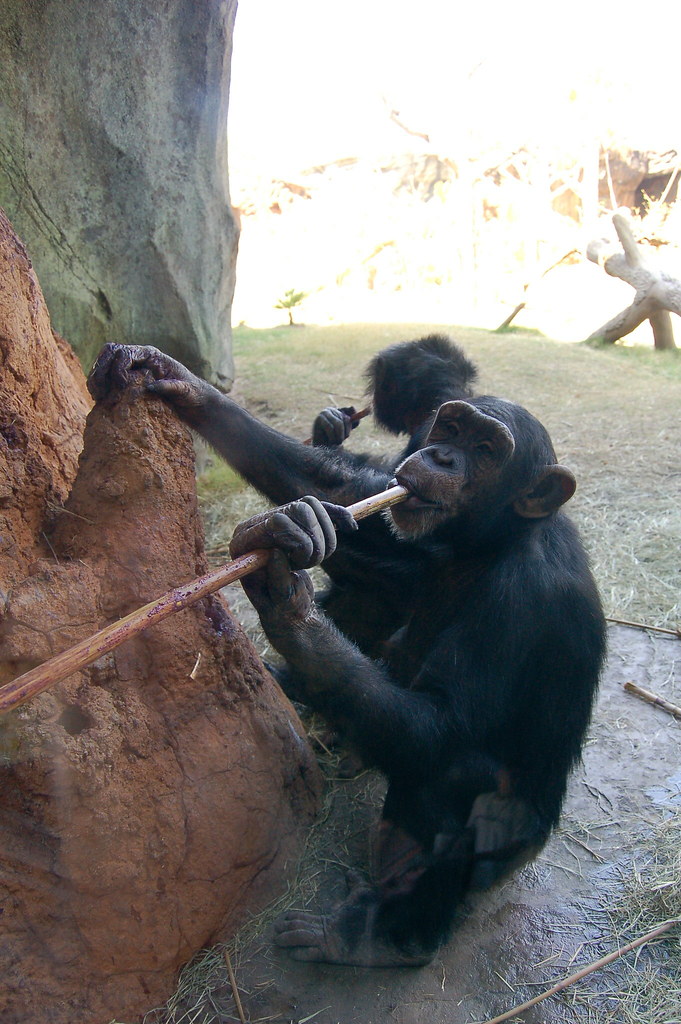5.6 Continued Evolution
When discussing evolution, even cognitive evolution, we must be cautious in assuming evolution has stopped. Granted, we are rarely able to see it taking place because the process can be slow. This is particularly true for macroevolution in longer lived species (like our own). As such, it is important to consider if and how cognitive traits continue to evolve.
For example, there is increasing evidence that many other primates are entering their own stone age. Much like Homo habilis began to use rocks to process gathered foods, so too are chimpanzees and other apes. All the apes have been observed processing food by using a hammerstone and anvil to crack nuts, grind insects, or extract juice from fruits. Capuchin monkeys will cooperate to extract hazelnuts, a favorite, from jars. Social media is also filled with video evidence of companion animals and livestock navigating their human-made worlds, using chairs to reach countertops, unlocking doors and gates, and using toys to teach others to play.


